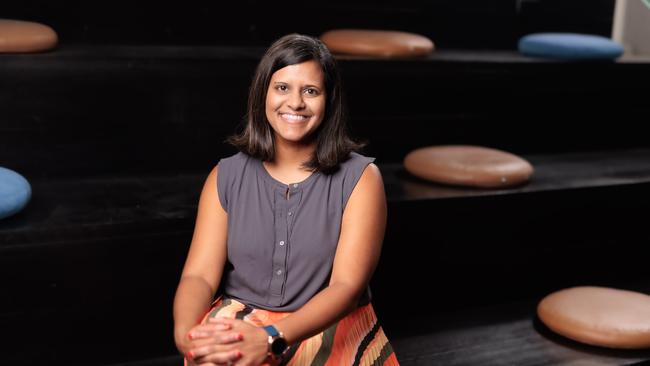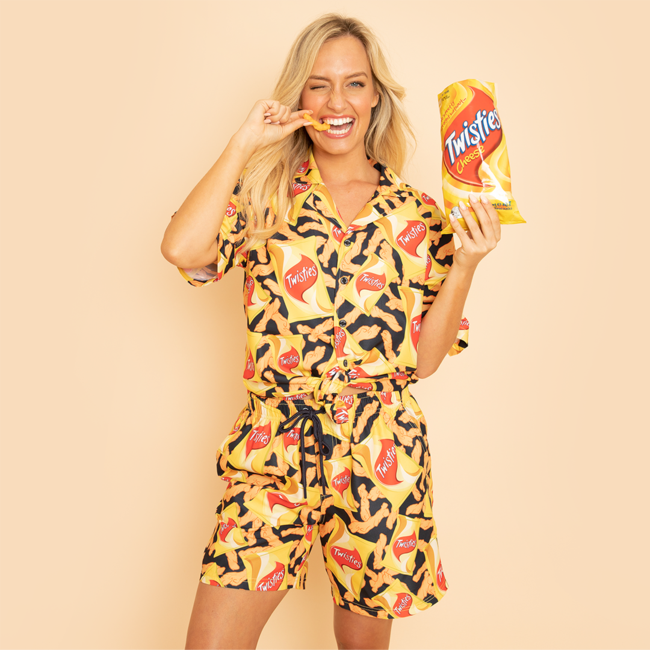PepsiCo sweetens customer experience deal with landmark app
As PepsiCo’s loyalty program app prepares for its Australian debut, the brand’s ANZ chief marketing officer Vandita Pandey discusses the critical role of data, creativity and agile digital ad spend.

As PepsiCo prepares to launch its “industry first” consumer loyalty and rewards app in Australia, SnackBack, the company’s chief marketing officer ANZ of snacks and beverages, Vandita Pandey, tells The Growth Agenda that more than a year of radical big data transformation has led to this point.
Customer personalisation at scale is key to winning the loyalty game at the multinational FMCG. At the same time, creative effectiveness has a much bigger place at the broader business table, according Ms Pandey.
The former Nutrogena and Bank of America exec, who now heads up marketing at PepsiCo brands including Doritos, Cheetos, Red Rock Deli, Twisties, Nobby’s, Smith’s Chips, Pepsi, Gatorade, 7Up and Mountain Dew, is set to welcome a treasure trove of FMCG data once the app kicks off and will use marketing to bring the proposition to life.
Ms Pandey, who has been at PepsiCo in various roles in the US and Australia for 13.5 years, argues that “the future of marketing is getting to personalisation at scale” and this can only be done with the right types and combinations of data.
“We know consumers want more and more personalisation, it’s important for them and we’ve seen in other markets where we’ve done this that personalisation leads to loyalty,” Ms Pandey said.
ANZ will be the third global market to launch the app, following Turkey and Mexico (the US has a web-based loyalty program), and is described by Ms Pandey as the first ‘always on’ consumer app in the Australian FMCG food and beverage industry.
SnackBack can communicate with users at a broader PepsiCo level and a brand-by-brand level. Underpinned by local consumer research and built by PepsiCo IT on in-house systems, the app will leverage its products, partners – such as Hoyts and Cricket Australia – sponsorships and brand promotions all in one PepsiCo platform.
While universally PepsiCo is spending more from a data standpoint, Ms Pandey said it’s by no means “a disproportionate amount” compared to other brand building or marketing endeavours.
“Obviously SnackBack is a big part of first party acquisition so there’s dollars to go support that, but the primary ways that drive the business and the category growth and that support our agenda (as well as retail agenda) still comes down to making sure we’ve got the right equity communications for the brands,” she said.
In addition to the app, there are a number of commercial and creative priorities in the marketing mix under Pandey’s helm. This includes evolving content strategies to include more culturally relevant, ‘always on’ communication, which ladder up to articulating and sharing its brand purpose. The brand is also focusing its efforts on more targeted ambitions, including its mission to deliver healthier snacks; by 2030, 30 per cent of PepsiCo’s snack range are set to achieve a Health Star Rating of 3.5.
This points to the increasingly critical role marketers must play in taking responsibility to push brand building and creativity in marketing initiatives and other business objectives and touchpoints.
“I’m a passionate believer that creative effectiveness can really deliver against broader business needs,” she said.
“We really focus on how we continue to elevate the creative that we have across our brands and deliver against broader business objectives versus just brand objectives.”
Digital media channels are rapidly changing in tandem with an insatiable consumer thirst for content. Against the backdrop of economic uncertainty, PepsiCo leans into market mix modelling to understand the relative contribution of its activities to make sure its advertising and marketing budget drives the best return.
Ms Pandey said this analysis has helped with broader “believability” in its marketing endeavours across the business.
At both a global and ANZ market level, PepsiCo has made a commitment to elevate its creative effectiveness.
“At PepsiCo we’re certainly a big believer in investing behind our brands, but equally we need to make sure that what we’re investing is delivering in terms of business growth. We therefore hold every single one of our dollars in our budget to a high degree of scrutiny,” Ms Pandey said.
“There’s a job to be done for marketers to really drive confidence in how you continue to deliver the best return on investment across your brands and make the biggest impact that you can.”
Ms Pandey explained how she personally takes PepsiCo’s CEO on a creative journey by booking in time to go over “hours of creative” looking at awards content and case studies.
“It was important for me to be able to demonstrate to him the power of creativity and really bring to life so many places where you can use creative to drive things such as societal issues or really solve business issues,” she said.
“It’s so important to have those types of conversations and bring to life the power of creativity.”
Ms Pandey believes there is a “huge role” from an agency standpoint in terms of the role of the brand and more holistically across the business.
“When you can find the right agency, the right agency partners, and the right team that really understands the brand, they can deliver incredible work that not just drives the marketing, but can drive the entire business end to end and that’s a piece that you just can’t replace.”
The SnackBack app is just one part of PepsiCo’s initiatives amid a much broader digital transformation internally on the ad tech front, and also within its ad dollars as it moves more spend into digital channels.
“We’ve had a really big focus from a transformation standpoint in the last couple of years to become more digitally native,” she said.
Its overall media mix, which is largely overseen by Omnicom’s PHD (with creative differences for all brands) has evolved significantly from 60:40 TV to digital spend to now almost 80 per cent being digital.
A brand example of a media mix shake-up involves cheesy crisp brand Twisties which Ms Pandey said saw “extraordinary” results after TikTok experiments.

“We weren’t able to invest at the level that we wanted to so we decided to do things really differently on this brand,” she explained.
Available mainly in Australia, the Twisties brand shifted spend into TikTok by proliferating its content on the platform; going from 20 pieces of social content in 2020 to 204 posts in 2022.
This helped it build a strong TikTok community resulting in a +279 per cent increase in views, +870 per cent increase in engagement and +95 per cent increase in followers.
Growth for the brand has accelerated since its TikTok bet, which resulted in double digit growth. This example is now used as a best use case for other global PepsiCo teams.
New for this brand was putting creative and media together with newcomer agency VaynerMedia which launched in Australia in 2021 and is owned by entrepreneur Gary Vaynerchuk.
Witnessing the highest dwell time compared to any other brand or campaign within its portfolio (about 200 per cent higher), she said moving to Vayner allowed the brand to get really efficient with how it spent its dollars.
“The nuance of boosting things almost dynamically on an hour by hour basis is something that still takes a certain level of collaboration and with how fast culture is moving and how fast a lot of things that happen on TikTok we wanted to try a different model where we have a single agency team that sits under just one company that does both the creative and media.”





